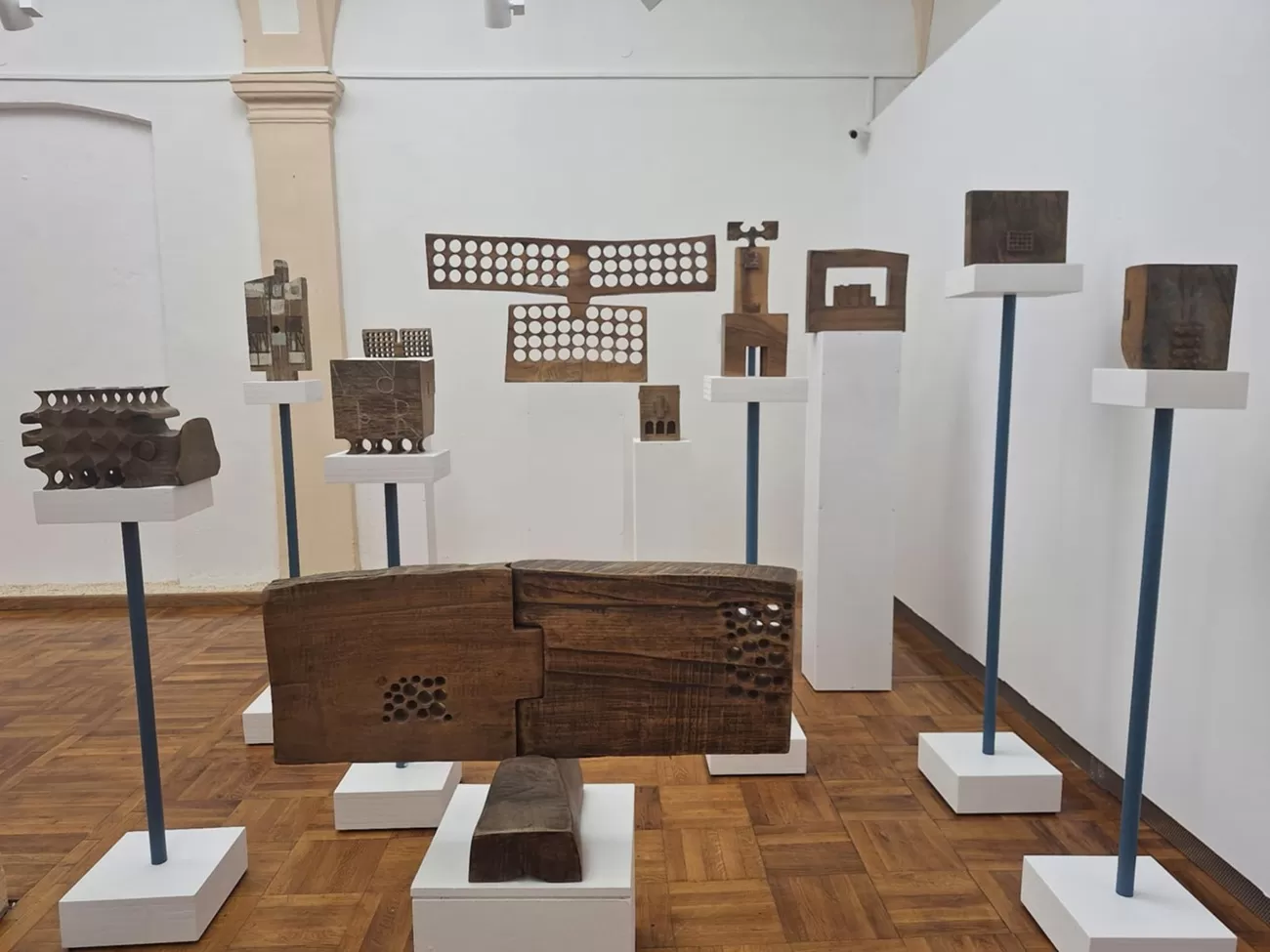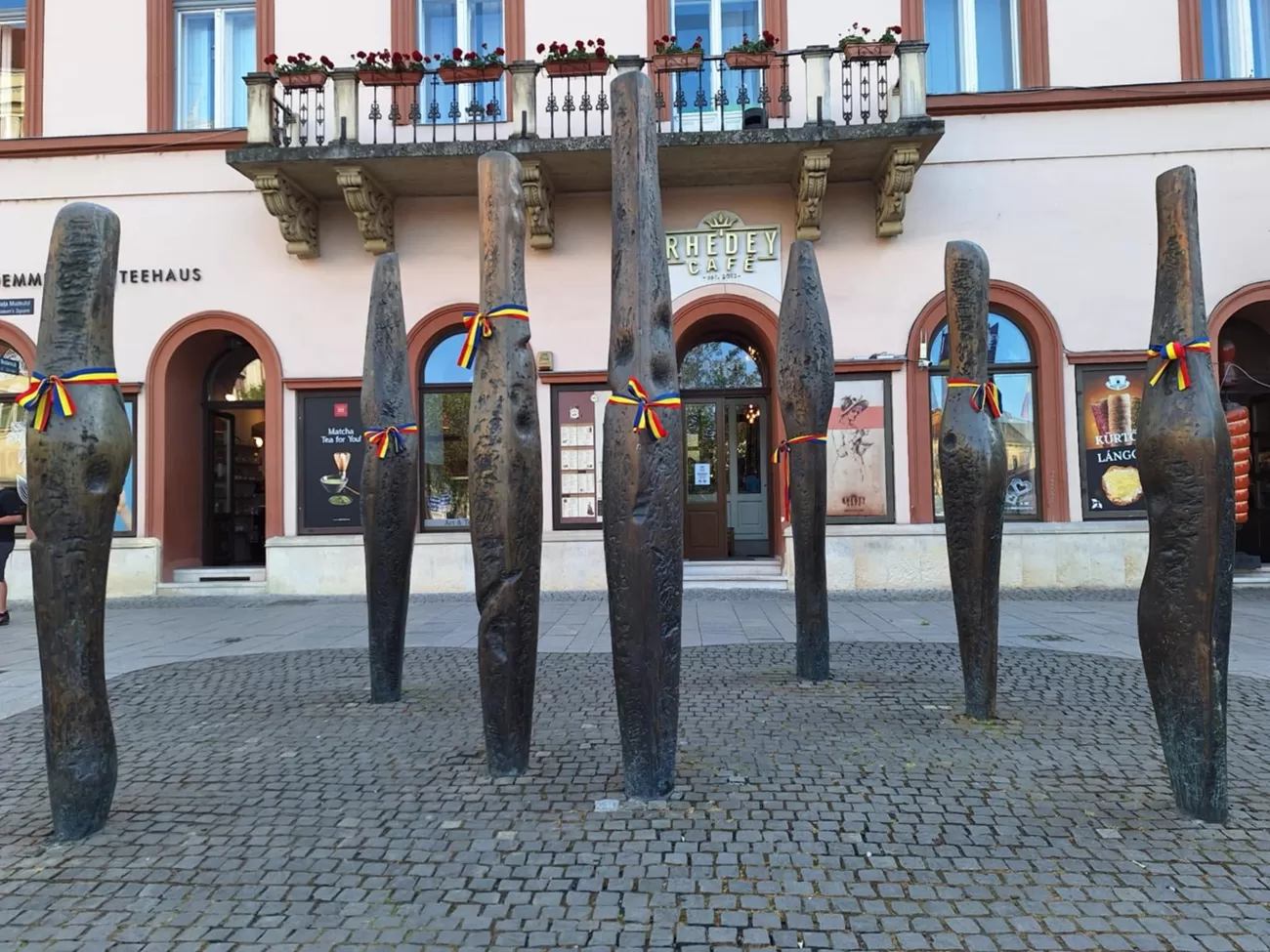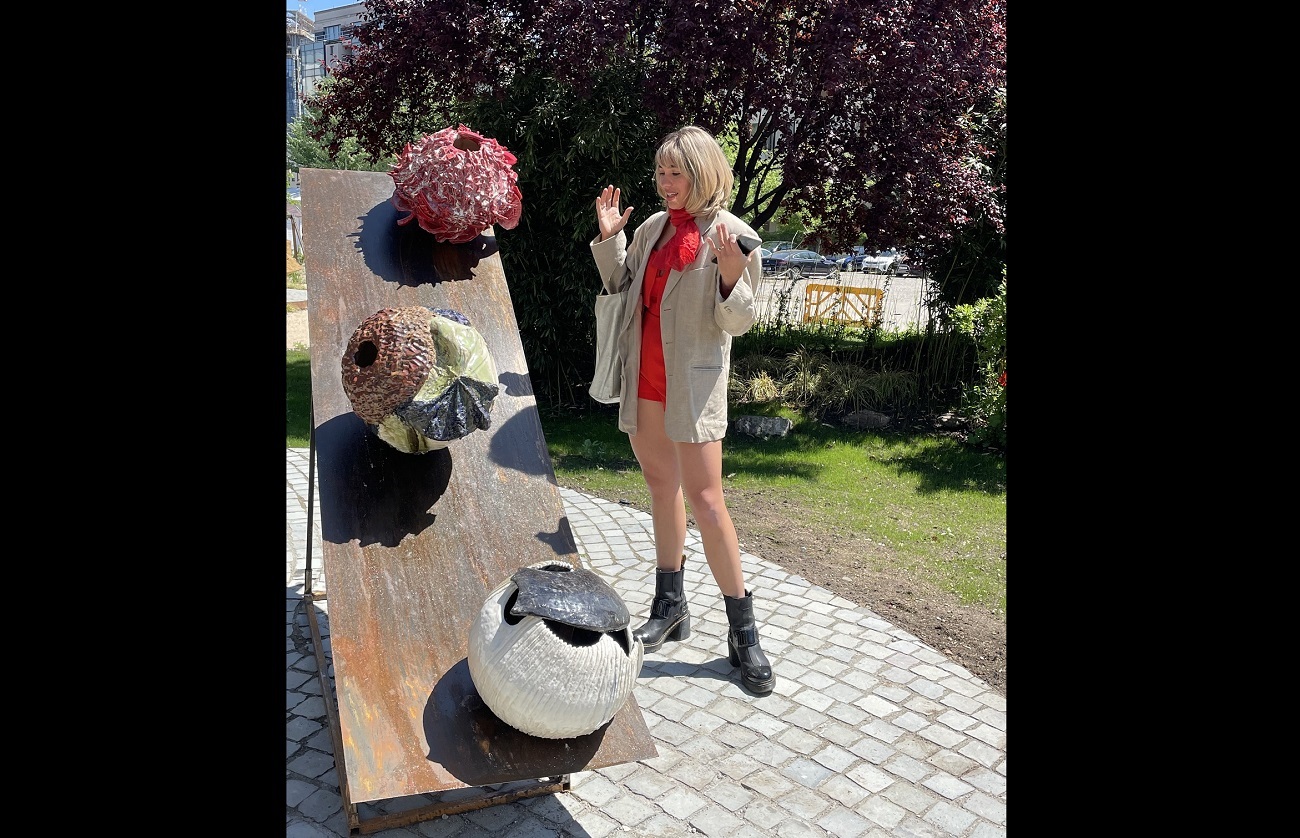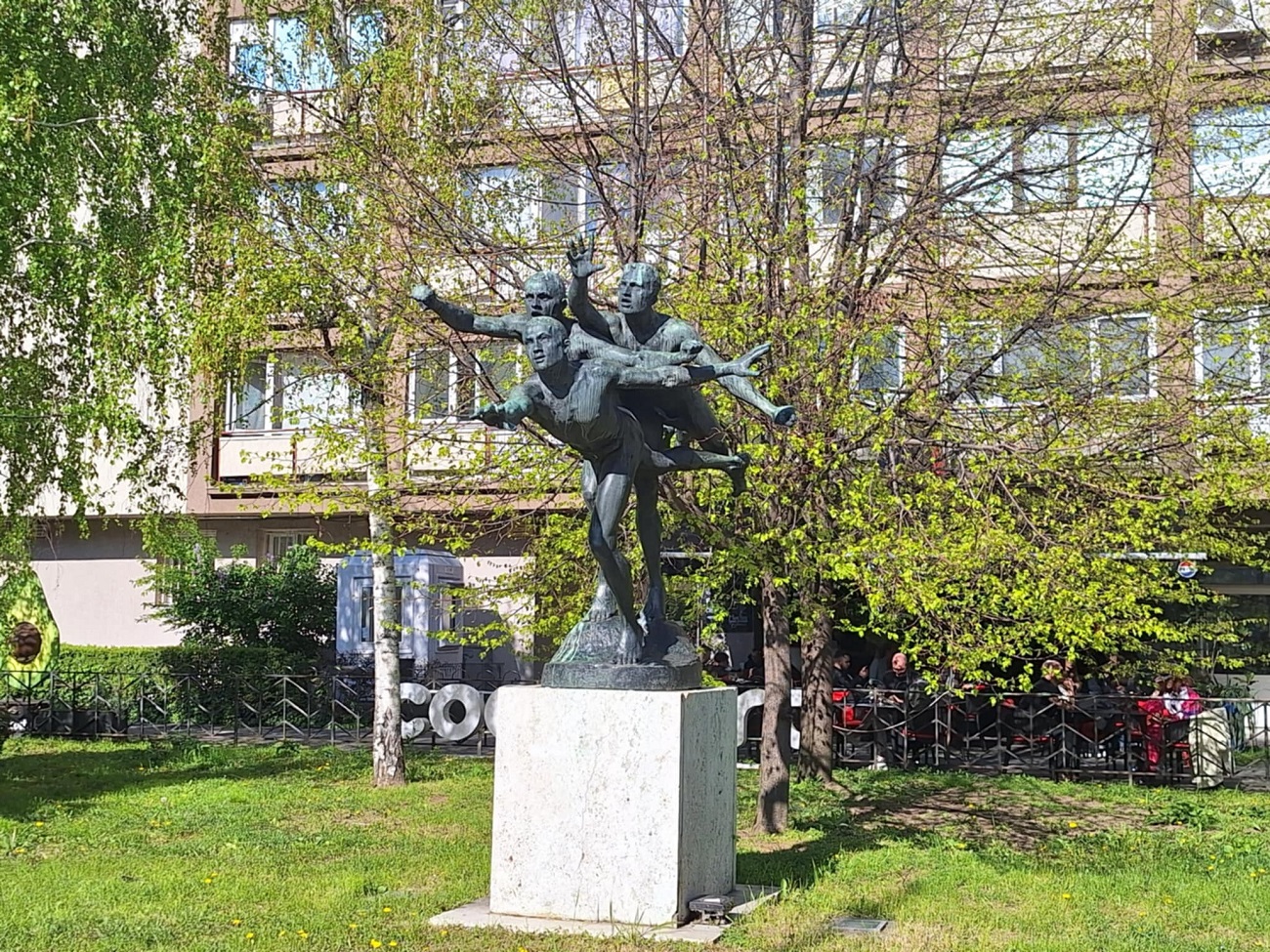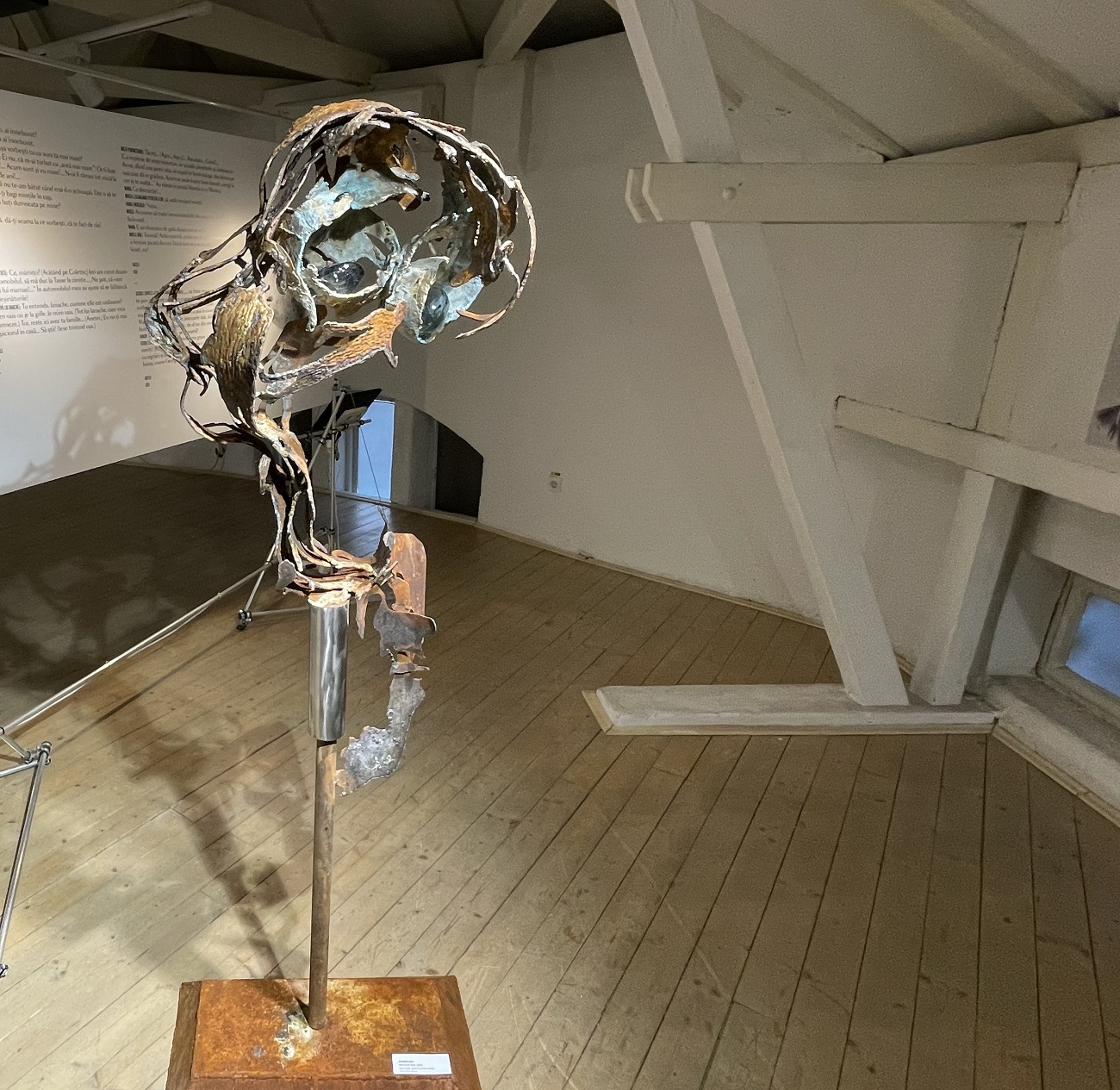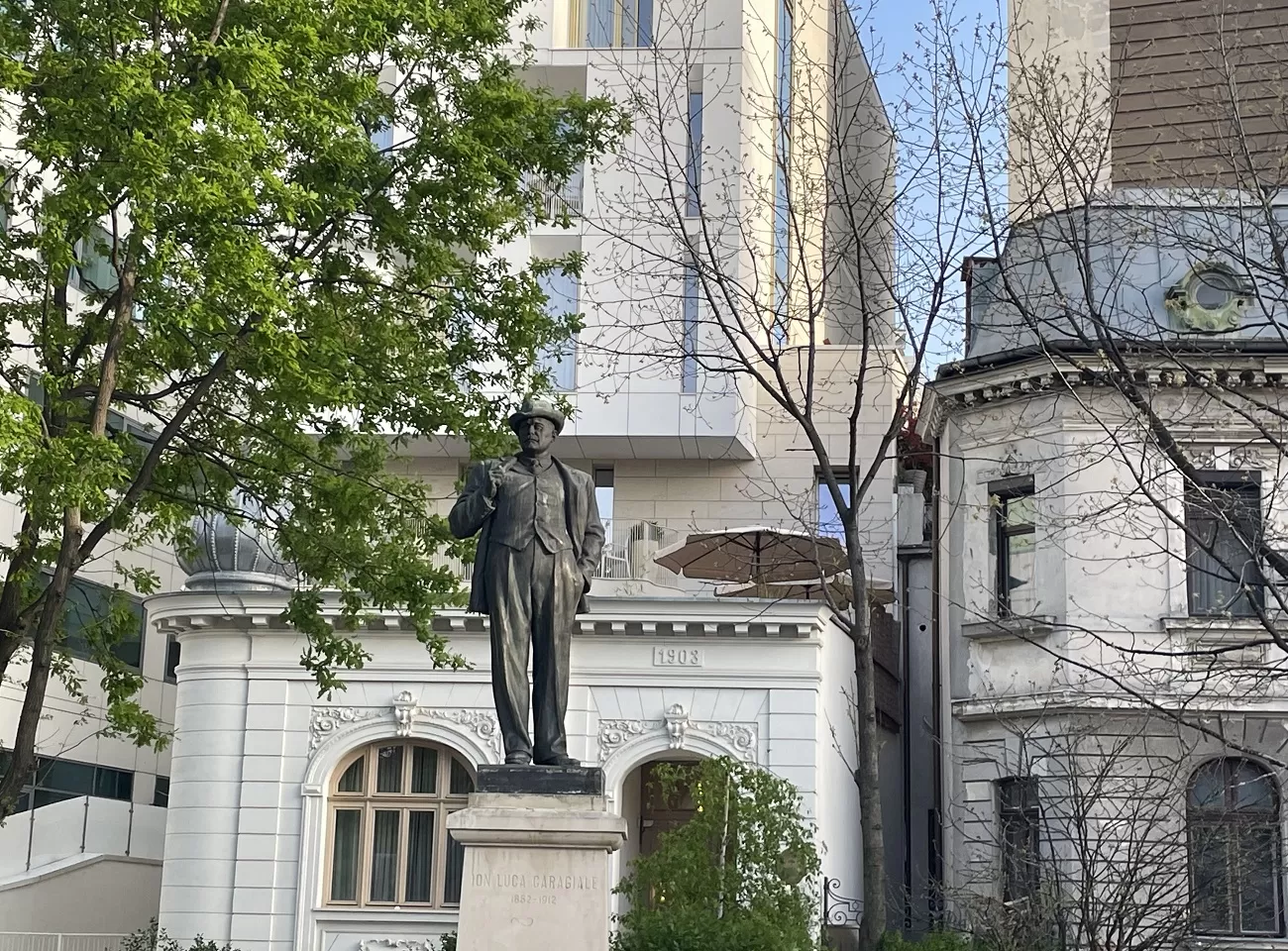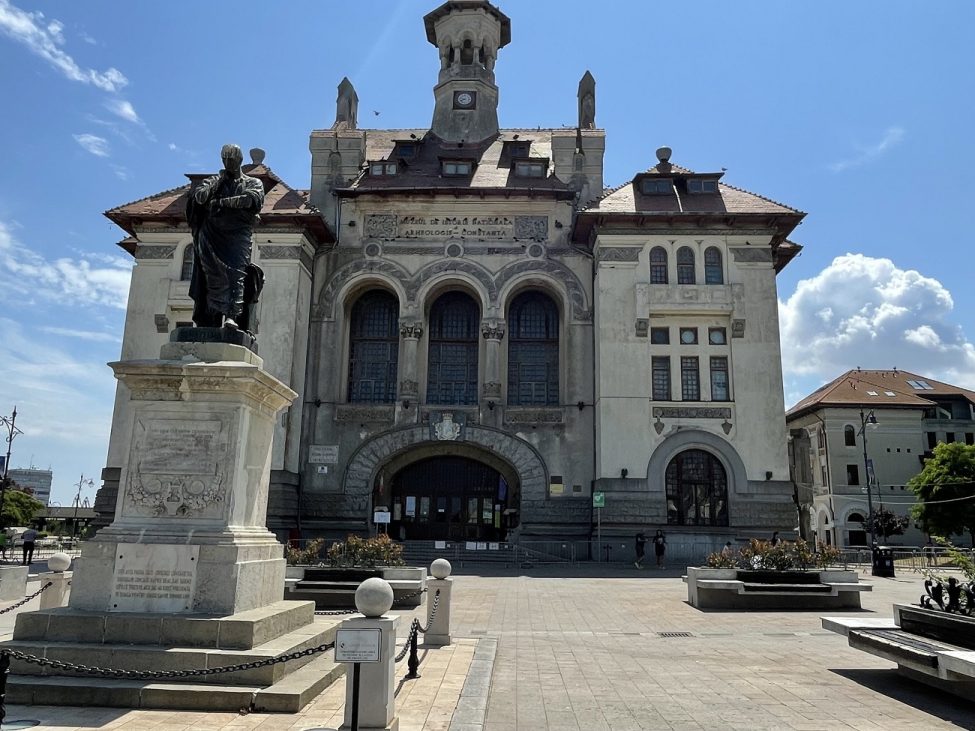
Monumental art – Ovidiu, the singer of gentle loves
Ovidiu Square, a popular place in Constanta, was named after the imposing statue representing the famous poet, the “singer of gentle loves”. Until 1947, it was known as Independence Square.
Made in bronze by Ettore Ferrari in 1887, the statue of the Roman poet Ovidius Publius Naso (43 BC – 17 AD), who was exiled in 8 AD to the old fortress of Tomis, is one of the oldest public monuments and can be considered an emblem of the city, like the Casino.
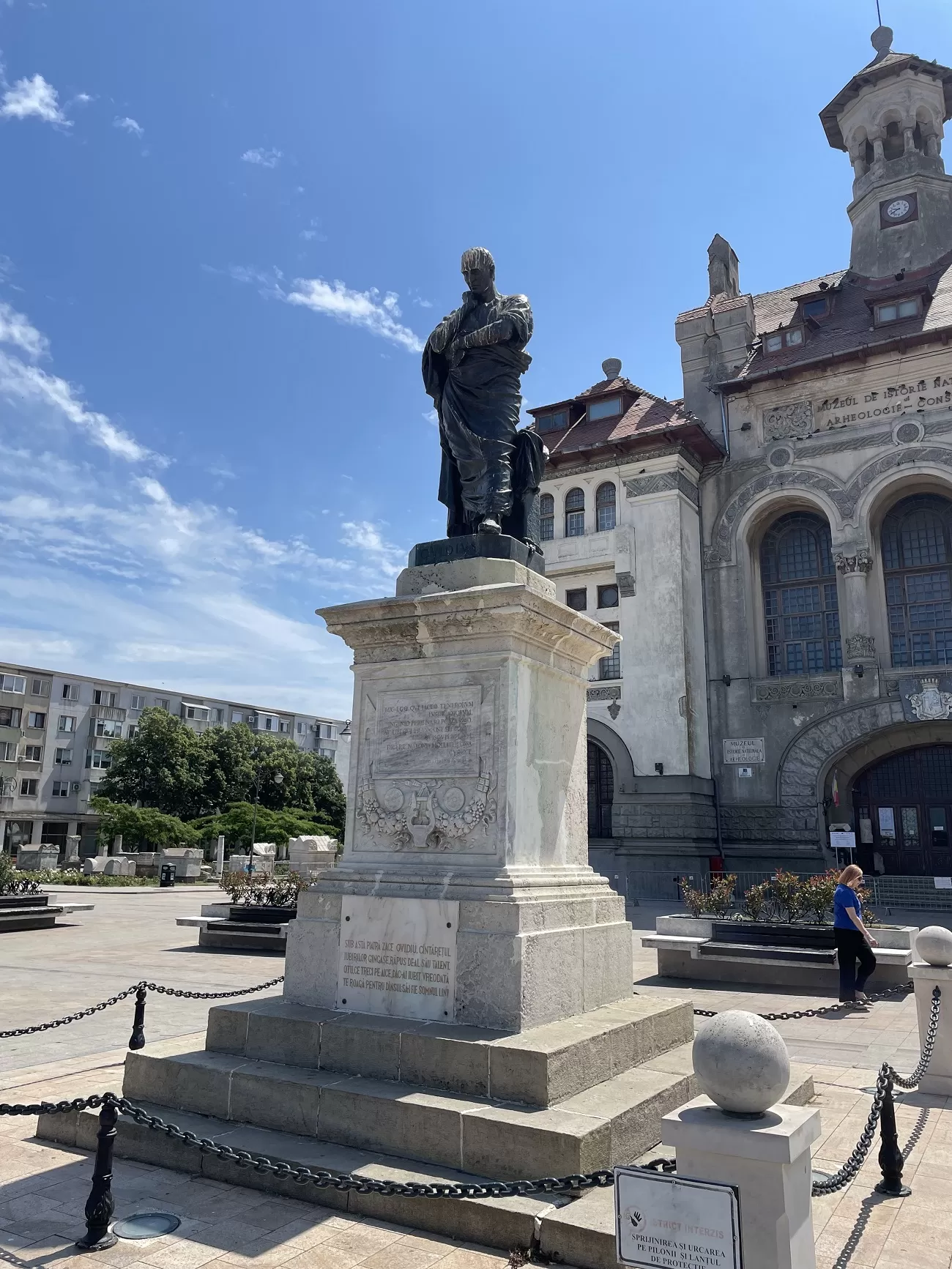
Statue of Ovidiu, Constanța, curatorial
After the War of Independence, the Romanian authorities commissioned the statue of the poet, seen as a symbol of the cultural and historical link between the territory of Dobrogea and the Roman world. The choice was no coincidence: Ovidiu, exiled in ancient Tomis, described life on the shores of the Black Sea in his works, thus providing a strong cultural argument in favor of the Romanness of the region recently integrated into the country’s borders after the War of Independence.
The monument was originally located in the northern part of the square, but in 1921 it was relocated to make way for the construction of the current Museum of National History and Archaeology, which was then the City Hall.
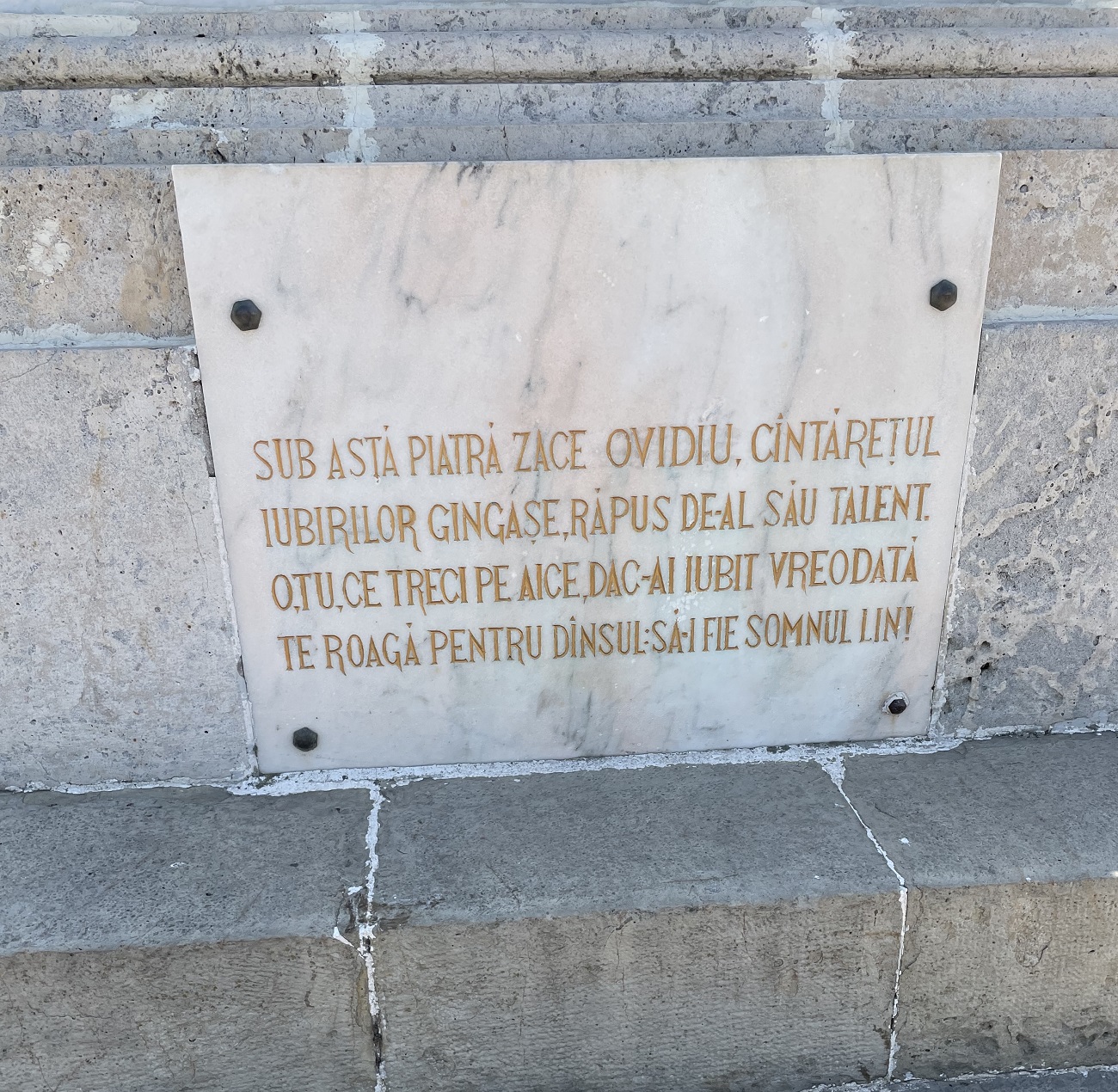
curatorial
The statue suffered during the First World War, when Dobrogea was occupied for two years by the Central Powers (Germany, Austro-Hungary, the Ottoman Empire and Bulgaria), who removed the bust from its plinth with the intention of taking it as spoils of war. The intervention of a German official prevented the monument’s permanent loss, who ordered the bust to be replaced on a temporary wooden plinth.
The story of the statue also inspired the poet’s home town. In 1925, a faithful replica of the Constanta monument was erected in Sulmona, Italy.
Photo credit: curatorial





